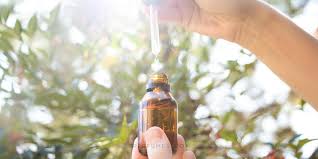
How Temperature Affects the Quality of Your Fragrance
Share
The Science Behind Temperature and Perfume
Temperature plays a crucial role in maintaining your fragrance's integrity. Just like fine wine, perfumes are sensitive to their environment. Heat, cold, and fluctuations can all impact:
-
Scent composition
-
Longevity
-
Color
-
Overall quality
How Heat Damages Fragrances
1. Accelerated Chemical Breakdown
✔ What happens: High temperatures cause fragrance molecules to break down faster
✔ Visible signs: Scent becomes weaker, changes character
✔ Danger zone: Above 75°F (24°C) for extended periods
2. Top Note Evaporation
✔ First to disappear: Citrus and light floral notes
✔ Result: Fragrance loses its initial sparkle
3. Color Changes
✔ Darkening liquid: Oxidation process speeds up
✔ Warning sign: If your clear perfume turns yellow/brown
Cold Temperature Effects
The Good:
✔ Preserves integrity in the short term
✔ Slows oxidation process
The Bad:
❌ Freezing temperatures can cause separation
❌ Repeated chilling/warming damages molecular structure
Ideal Storage Conditions
| Factor | Ideal Range | Why It Matters |
|---|---|---|
| Temperature | 55-72°F (13-22°C) | Prevents molecular breakdown |
| Humidity | Below 70% RH | Avoids moisture damage |
| Light | Complete darkness | UV rays degrade compounds |
Common Storage Mistakes to Avoid
-
Bathroom storage (heat + humidity = worst combo)
-
Car glove compartments (extreme temperature swings)
-
Windowsills (direct sunlight damage)
-
Near radiators/AC vents (constant temperature changes)
Signs Your Perfume Has Been Heat-Damaged
✔ Changed scent (more alcohol smell)
✔ Different color
✔ Weaker performance
✔ Separated layers
Travel Tips for Fragrance Protection
-
Use insulated cases in hot weather
-
Keep upright to prevent leaks
-
Avoid checked luggage (extreme cold in cargo hold)
-
Opt for solid perfumes when traveling to hot climates
